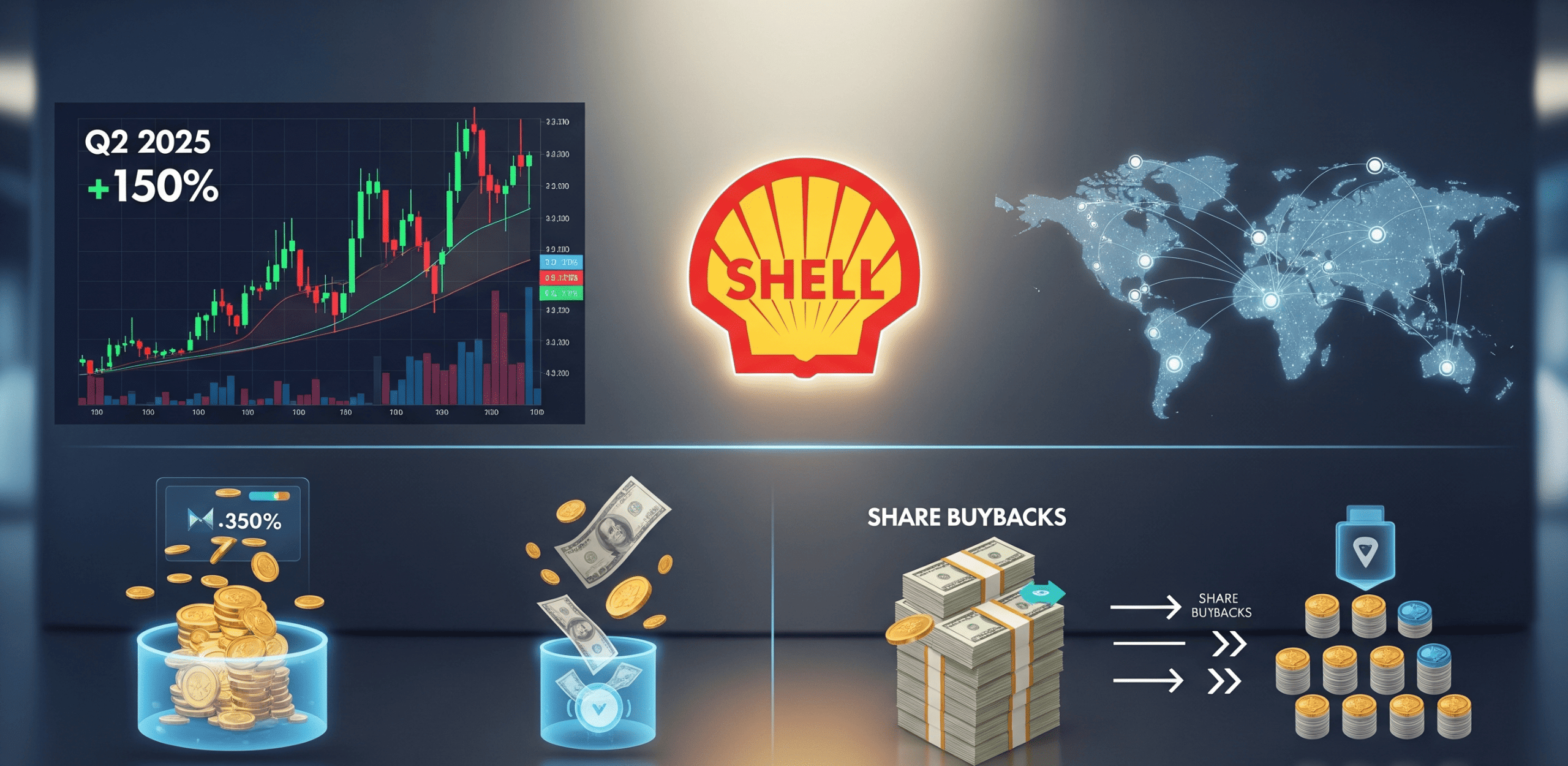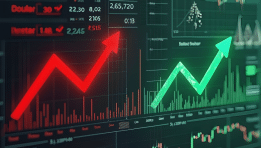Shell plc reported its financial results for the second quarter of 2025, demonstrating strong operational resilience and disciplined financial management in a challenging macroeconomic environment. Despite lower commodity prices and softer trading margins, the company maintained solid profitability, continued shareholder distributions, and made notable strategic investments.
Solid Operational Delivery and Robust Cash Generation
Shell posted adjusted earnings of $4.3 billion in Q2 2025. While this figure declined compared to the previous quarter, it remains a testament to the company’s resilient operations and capital discipline. Net income attributable to shareholders was $3.6 billion.
Cash flow from operations (CFFO) stood at $11.9 billion, and excluding working capital movements, reached $12.3 billion. This performance was supported by joint venture dividends and favorable derivative cash flows. The strong free cash flow enabled Shell to launch a new $3.5 billion share buyback program for the upcoming three months – the 15th consecutive quarter of buybacks worth at least $3 billion, underscoring Shell’s continued commitment to shareholder returns.
Focus on Efficiency and Structural Cost Reductions
Since 2022, Shell has undertaken a comprehensive cost-reduction strategy. In the first half of 2025 alone, the company delivered $0.8 billion in structural savings, including $0.5 billion through non-portfolio actions such as operational optimizations and efficiency improvements.
In total, Shell has now achieved $3.9 billion in cost reductions, progressing toward its CMD25 target of $5 to $7 billion by the end of 2028. These efforts have enhanced Shell’s financial flexibility and provided resilience against external market fluctuations.
Shell’s gearing ratio remains low and stable at 19%, while net debt rose slightly to $43.2 billion. Capital expenditures for the quarter totaled $5.8 billion, and full-year guidance remains unchanged at $20 to $22 billion.
Strategic Asset Growth in Nigeria, Brazil, and Canada
Shell advanced its global portfolio through a series of strategic initiatives. A key milestone in Q2 was the shipment of the first LNG cargo from the LNG Canada project. This marks a major step in Shell’s LNG growth strategy, which aims for a compound annual growth rate of 4–5% in LNG sales through 2030.
In deepwater exploration, the company commenced production at Mero-4 in Brazil and increased its ownership stakes in both Gato do Mato (Brazil) and Bonga (Nigeria). These moves align with Shell’s long-term strategy to focus on high-margin, capital-efficient assets while divesting non-core or underperforming operations.
Segment Performance: Marketing Strength, Chemical Weakness
Segment results were mixed. The Integrated Gas and Upstream businesses each delivered adjusted earnings of $1.7 billion, though both declined quarter-over-quarter due to lower prices and reduced contributions from trading and optimization.
The standout performer was the Marketing segment, which saw adjusted earnings rise to $1.2 billion. The increase was driven by seasonal strength, improved margins in the Mobility division, and efficient logistics.
In contrast, the Chemicals & Products segment struggled, reporting adjusted earnings of just $118 million. While refining margins improved, chemicals operations were hampered by weak demand, unplanned outages, and volatility in supply-demand dynamics, leading to substantially lower trading contributions.
Renewable Energy: Modest Decline, Continued Capacity Growth
Renewables & Energy Solutions (R&ES) reported a small adjusted loss of $9 million, roughly in line with the previous quarter. The loss was attributed to seasonally lower power and gas sales to end-use customers, offset by continued efforts to reduce operating expenses.
Despite the flat earnings, Shell continued to invest in its renewable energy infrastructure. Installed capacity rose to 3.9 GW, while total capacity, including projects under construction or committed for sale, reached 7.6 GW. This segment also includes hydrogen development, carbon capture initiatives, and investments in digitally enabled customer solutions and carbon markets.
Working Capital, Dividends, and Capital Returns
Working capital declined by $0.4 billion, primarily due to a release of joint venture deposits. Nonetheless, free cash flow rose to $6.5 billion, up from $5.3 billion in Q1 2025. These figures reflect Shell’s ability to manage cash flow efficiently even in periods of capital volatility.
Over the last four quarters, total shareholder distributions represented 46% of Shell’s cash flow from operations. This included both dividend payments and share repurchases. Shell reaffirmed its long-standing strategy of balancing reinvestment, debt management, and shareholder returns in a disciplined manner.
Investing for the Future: Balancing Climate Goals with Capital Efficiency
Shell remains committed to investing in assets that support the energy transition while maintaining a strong return profile. The company is channeling capital into hydrogen, carbon capture and storage (CCS), nature-based solutions, and energy trading platforms.
However, Shell noted that achieving long-term carbon neutrality targets depends on broader societal progress, including regulation, technology, and market readiness. The company updates its portfolio outlook annually and emphasized that if global net-zero goals are not achieved by 2050, Shell itself may fall short despite its internal ambitions.
Conclusion: Resilience and Consistency Amid Market Uncertainty
Shell closed the second quarter of 2025 with a strong balance sheet, substantial free cash flow, and consistent capital returns to shareholders. The company’s performance illustrates its ability to thrive in a complex global environment, supported by operational excellence, disciplined investment, and strategic asset management.
By navigating a path between profitability and sustainability, Shell is positioning itself as a leader in the evolving energy sector. Whether through LNG expansion, deepwater exploration, or renewable investment, Shell continues to demonstrate a focused approach to long-term value creation.
Comparison, examination, and analysis between investment houses
Leave your details, and an expert from our team will get back to you as soon as possible
* This article, in whole or in part, does not contain any promise of investment returns, nor does it constitute professional advice to make investments in any particular field.
To read more about the full disclaimer, click here- orshu
- •
- 7 Min Read
- •
- ago 4 hours
 THE AMERICAS MARKET CLOSES IN THE RED, DRIVEN BY BROADER SELL-OFF
THE AMERICAS MARKET CLOSES IN THE RED, DRIVEN BY BROADER SELL-OFF
The final trading session of the week for the Americas' markets saw a broad decline, as a wave of selling
- ago 4 hours
- •
- 7 Min Read
The final trading session of the week for the Americas' markets saw a broad decline, as a wave of selling
- orshu
- •
- 6 Min Read
- •
- ago 5 hours
 U.S. Labor Market Weakens Sharply: Job Growth Disappoints, Prior Data Revised Down Heavily
U.S. Labor Market Weakens Sharply: Job Growth Disappoints, Prior Data Revised Down Heavily
The latest U.S. jobs report paints a troubling picture of the labor market's momentum. The economy added just 73,000 jobs in
- ago 5 hours
- •
- 6 Min Read
The latest U.S. jobs report paints a troubling picture of the labor market's momentum. The economy added just 73,000 jobs in
- orshu
- •
- 7 Min Read
- •
- ago 7 hours
 USA Rare Earth (USAR): A Strategic Bet on America’s Critical Mineral Independence
USA Rare Earth (USAR): A Strategic Bet on America’s Critical Mineral Independence
Initiation with a $16 Price Target — What's the Rationale? Cantor Fitzgerald has initiated coverage on USA Rare Earth (Ticker: USAR) with
- ago 7 hours
- •
- 7 Min Read
Initiation with a $16 Price Target — What's the Rationale? Cantor Fitzgerald has initiated coverage on USA Rare Earth (Ticker: USAR) with
- orshu
- •
- 6 Min Read
- •
- ago 7 hours
 ExxonMobil Q2 2025 Earnings: Operational Strength Amid Net Income Decline
ExxonMobil Q2 2025 Earnings: Operational Strength Amid Net Income Decline
ExxonMobil (NYSE: XOM) released its Q2 2025 earnings report, highlighting robust operational metrics and continued cost efficiencies, despite a notable
- ago 7 hours
- •
- 6 Min Read
ExxonMobil (NYSE: XOM) released its Q2 2025 earnings report, highlighting robust operational metrics and continued cost efficiencies, despite a notable












